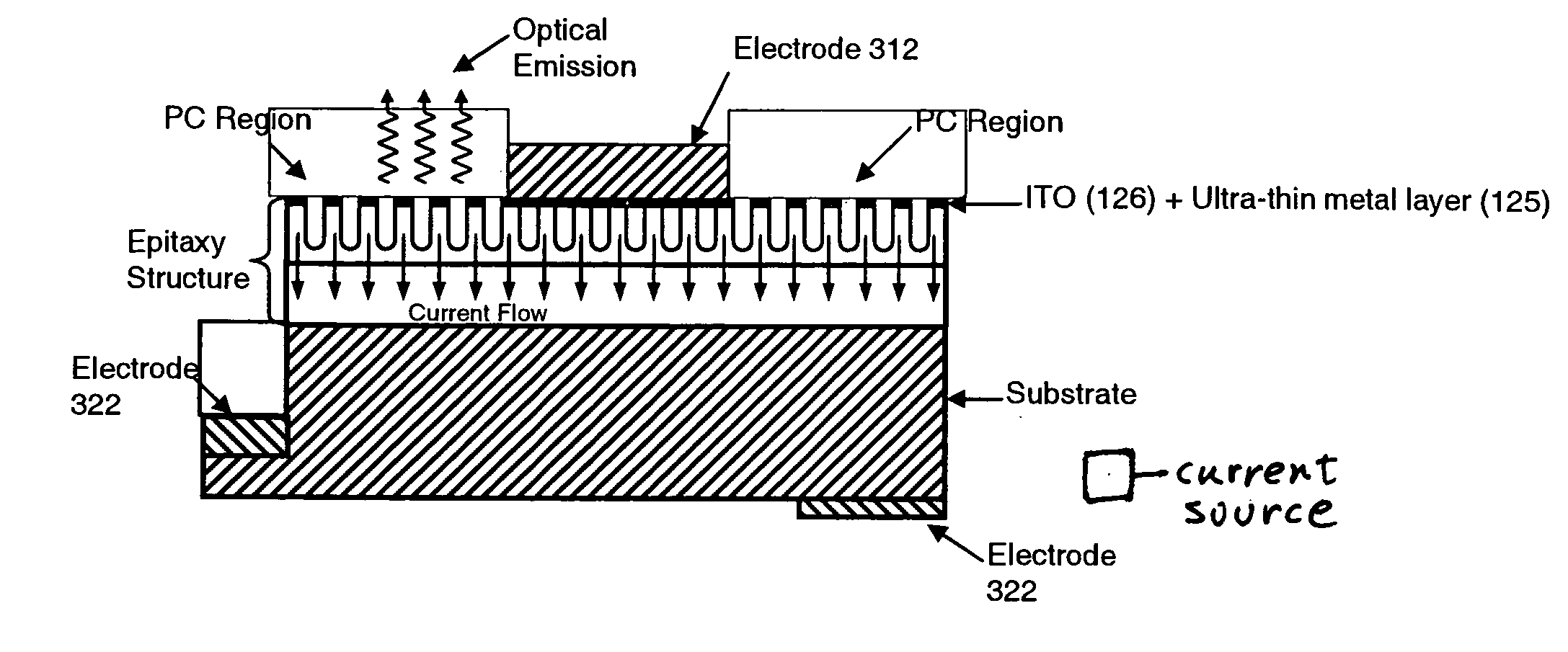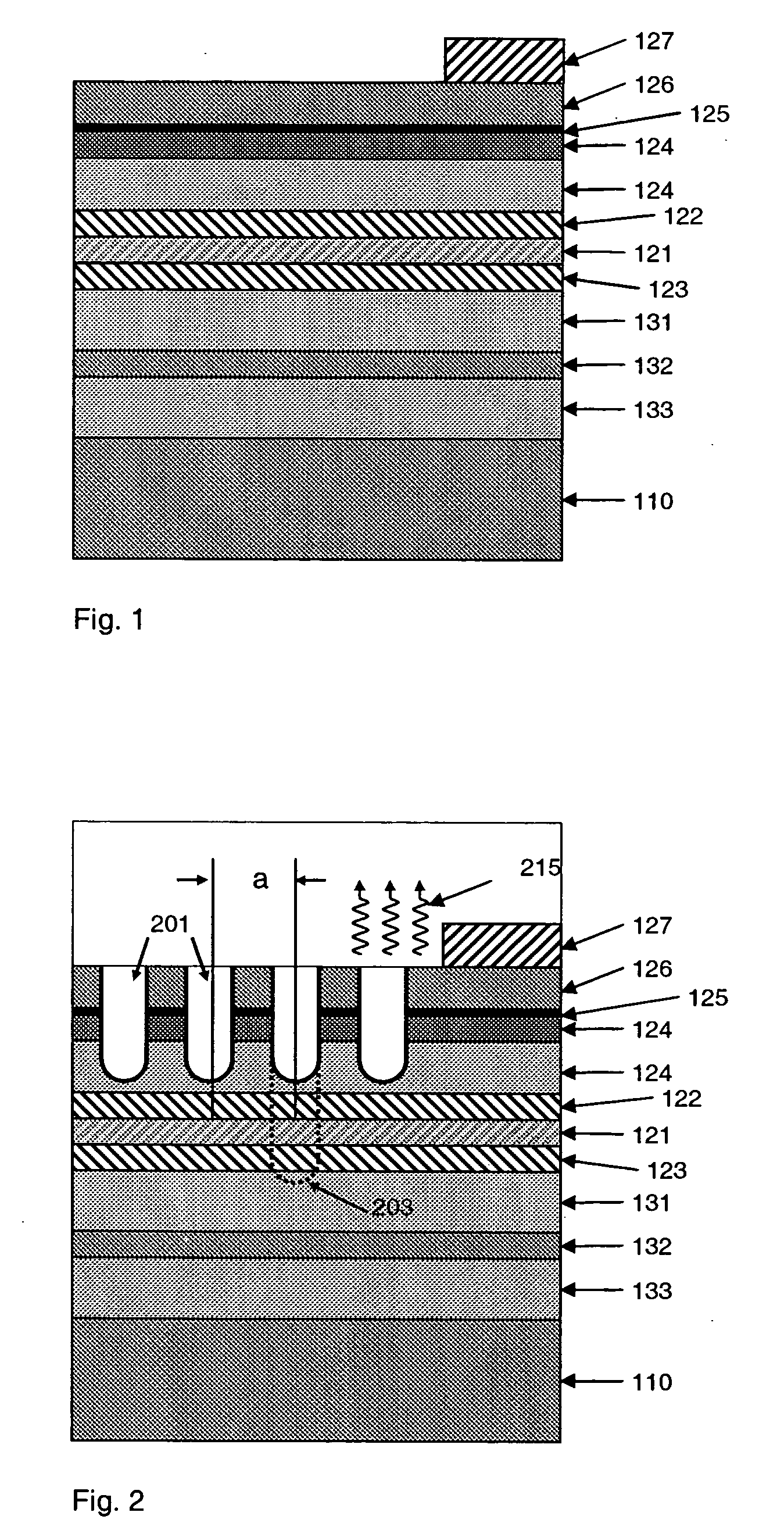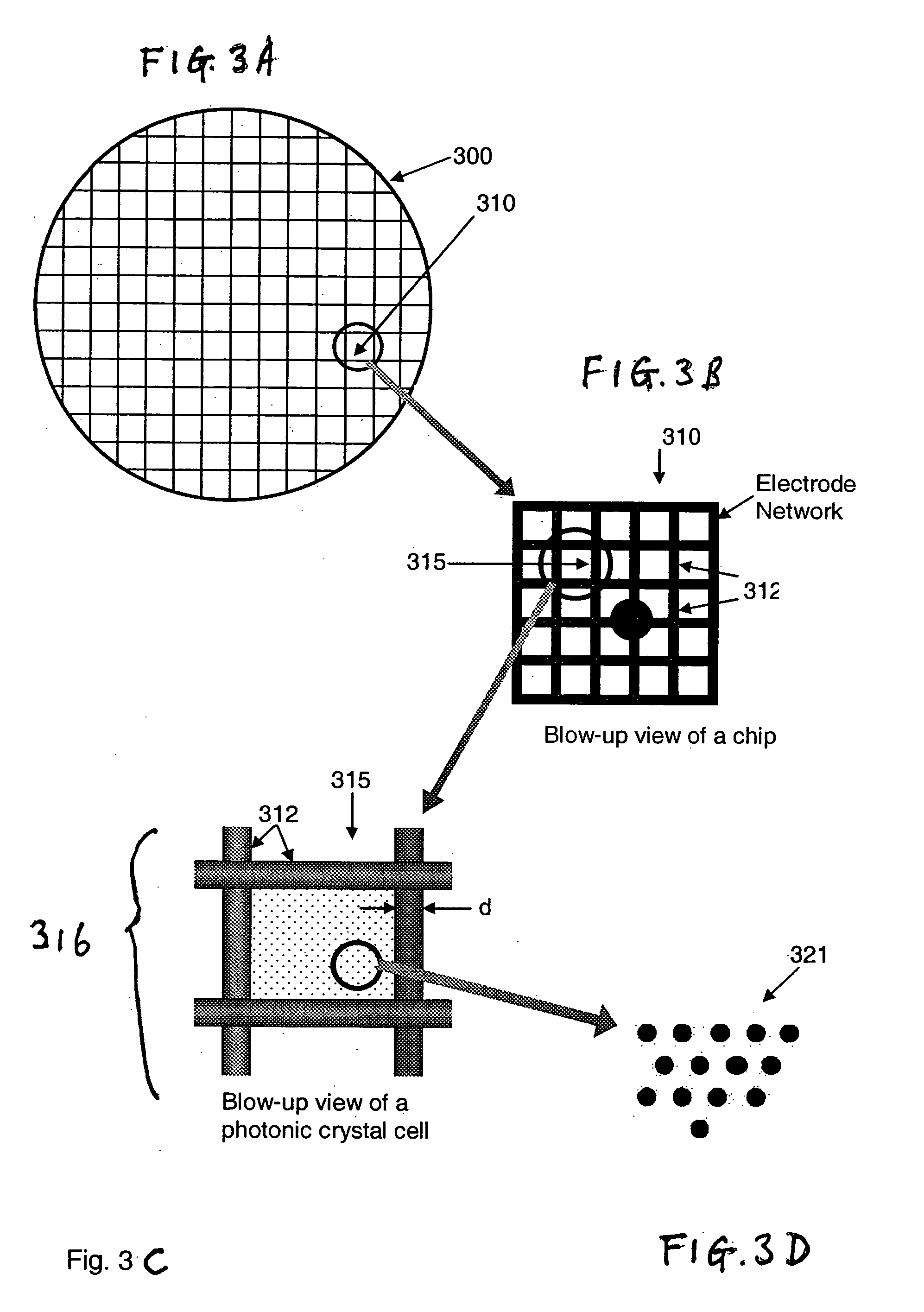Light emitting system with high extraction efficency
- Summary
- Abstract
- Description
- Claims
- Application Information
AI Technical Summary
Benefits of technology
Problems solved by technology
Method used
Image
Examples
Embodiment Construction
[0016] In order to illustrate one embodiment of the present invention directed to a solid state lighting system having a photonic crystal (PC) structure with clarity, we first present an epitaxial structure suitable for implementing photonic crystal and then add the photonic crystal structure into the epitaxial structure. FIG. 1 shows the epitaxial structure of the present invention without the PC structure. All epitaxial layers are grown on the top of the substrate 110. The substrate material is typically GaAs for red or yellow light emission structures and Sapphire, GaN or SiC for UV, blue and green light emission structures. Layer 121 is the active layer, where holes and electrons combine to emit light. The epitaxial structure of active layer 121 can be double heterostructure, multi-quantum wells (MQWs), or multi-quantum dots (MQDs) to optimize the internal quantum efficiency.
[0017] Holes and electrons combine in the active layer 121, causing light to be spontaneously generated ...
PUM
 Login to View More
Login to View More Abstract
Description
Claims
Application Information
 Login to View More
Login to View More - R&D
- Intellectual Property
- Life Sciences
- Materials
- Tech Scout
- Unparalleled Data Quality
- Higher Quality Content
- 60% Fewer Hallucinations
Browse by: Latest US Patents, China's latest patents, Technical Efficacy Thesaurus, Application Domain, Technology Topic, Popular Technical Reports.
© 2025 PatSnap. All rights reserved.Legal|Privacy policy|Modern Slavery Act Transparency Statement|Sitemap|About US| Contact US: help@patsnap.com



